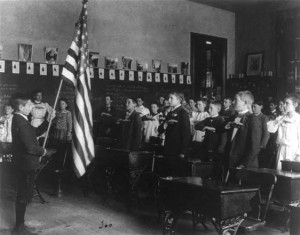“These standards are just that—they are standards.” These are the words used by Luci Willits of Idaho State Department of Education, Chief of Staff to Tom Luna, as she introduced Common Core to our Senate Education Committee (1/19/11). And you will hear that sentiment parroted by others;
“The standards are just that: standards.” Bill Gates (2/12/14)
But when you look further, you can find the claim that,
“When the grant [Race to the Top] was put forth, the State Department of Education went to the colleges to ensure that any student who passes these standards will be able to go to any college without the need of remedial training.”
Standards DON’T “ensure” student success. Somehow, these standards became magical standards. And all of Idaho’s major colleges and universities stood with arms locked in testimony to the Core.
Standards are “just” guides. But these standards —The Common Core Standards — are much, much more. They are the Trojan Horse of systemic transformation.
But Idaho’s department of education went even further in claiming…
“There is also tremendous cost-savings associated with these standards; Idaho will be able to get the test it has always wanted but never been able to pay for.”
Who will pay? The same magician sprinkling fairy dust, or, will we all be paying the pied piper?
Lawmakers across the country are being asked to judge whether this is the change that is best for children, families, and communities. How will they make the call when the horse is so attractive?
Expose what is in the belly of the beast. The foundational principles, or the assumptions that are made by those in power, are what is important to understand.
- The State will decide what education outcomes are important based on economic data.
- Local control is a barrier that can be gotten around by training school board members properly (decided by the Broad Foundation?).
- Lay-citizen participation in governance of schools should be weakened “in favor of control by politicians, especially governors, elected positions in general government.” (Marc Tucker, Governing American Education, page 44)
Real school improvement involves “lay-citizens.” But that is not how it is seen from above.
I know many people believe that private industry can do a better job than public institutions. But please think about what happens when private associations and organizations are using the law to their benefit – monetarily or for political power – what will be the true cost to taxpayers?
In Idaho, as it would seem to be the case across the country, the seemingly innocent policy of strategic planning and training of school boards is being put into law. It is putting the governing of schools at the local level in jeopardy.
Strategic planning is not necessarily a school improvement process; it all depends on who does the “training” and what “curriculum” they are using. What will those in control be “leveraging” our board members to do?
Close the gate (so to speak). Keep the Trojan Horse out!
Decide how schools will be governed. It matters!













